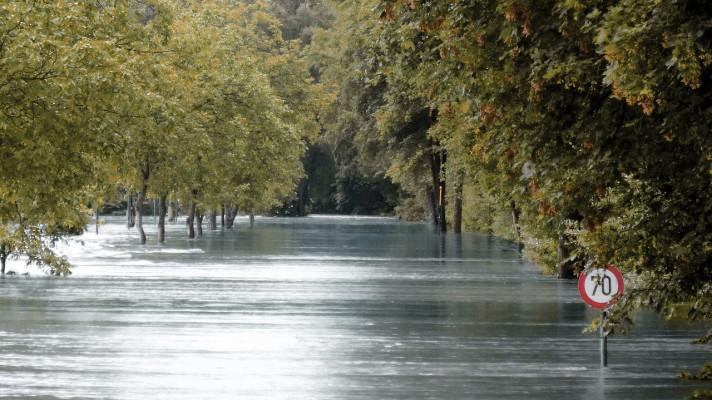Natural water-retention measures, which 'keep the rain where it falls', have great potential to be used as part of flood-risk management plans...
Nature-based flood management needs joined-up policy approach to manage benefits and trade-offs
But their benefits for downstream urban areas can bring costs to the upstream agricultural areas where they are installed, a recent analysis explains. The researchers behind this analysis suggest that we need new and/or improved policies and institutions to oversee the trade-offs and benefits for agriculture and flood management, and a better scientific understanding of the measures' likely impact on urban flood risk.
The analysis, conducted by academics in Sweden, draws on various studies to discuss the many benefits of natural water-retention measures and how to encourage their uptake. Floods, which have caused annual economic losses of EUR4 900 million in Europe, are a serious problem. Natural water-retention measures could play an important role in managing floods, the researchers say, and help meet the goals of the EU's Floods Directive and Water Framework Directive. These nature-based solutions store rainfall and allow it to evaporate back into the atmosphere to help prevent water flowing into urban areas, where it can cause the greatest damage.
Natural water-retention measures are a key example of how green infrastructure can work alongside traditional grey infrastructure (e.g. flood gates). They take many forms, from small green roofs to large forests, and bring multiple benefits. As well as reducing flood risk, they can have value for biodiversity, recreation and water quality because they reduce soil erosion and can prevent agricultural pollution running into rivers.
However, this multi-functionality may also act as a barrier to their uptake. Because they bring benefits that fall under different policy areas, it is not necessarily easy for decision makers to determine who should pay for these measures. For some measures, the effect on flood risk may be an additional, secondary benefit -- as in the case of agricultural buffer zones, which are primarily intended to reduce fertiliser run-off.
Alongside flood-management benefits, measures installed on upstream agricultural land can also lead to trade-offs, notably reduced crop yield. This loss occurs either because cropland is replaced by the measures or because soil in fields becomes too wet. A payment-for-ecosystem-services (PES) model could, therefore, be used to finance natural water-retention measures, possibly through national agri-environmental schemes. Research from the USA has indicated that it is less costly to pay farmers to temporarily flood their land upstream, than it is to pay for urban damage downstream.
Other barriers to widespread uptake of natural water-retention measures include specific knowledge gaps. There is plenty of evidence to show the effectiveness of individual natural water-retention measures, particularly in small catchments. Computer-modelling studies suggest natural water-retention measures could contribute to downstream flood risk reduction, but there is a lack of real world studies which show how to incorporate such measures into flood-risk management plans and their likely impact on downstream urban flood risk. Such studies are needed to encourage further uptake by decision makers and land managers (such as farmers).
The exact area of responsibility -- or jurisdiction -- of decision makers with regard to flood-risk management also remains unclear. As such, water policy at the national level is accountable to EU water directives and national decisions must be consistent with the decisions made at the EU level. This is also true for regional-level policy, which is based on national policy and, similarly, local decisions are founded on regional policy. Unfortunately, this set of embedded decisions seems to break down with flood-risk management and has led to a lack of distinction between jurisdictions. Each jurisdiction attempts to reduce flood damage within a limited area and thus tends to focus on the use of preventive structural measures, such as dams or retaining walls, rather than measures to reduce flooding1.
The authors recommend that institutional structures and mechanisms are created or enhanced to oversee the urban/rural trade-offs that natural water-retention measures may bring, to match potential costs with benefits and ensure an appropriate compensation scheme is put in place; for example, one which links PES with flood-risk management plans.
1. This shortcoming should normally be addressed by the inclusion of a river basin approach within the flood risk management plans: ec.europa.eu
Source: Collentine, D. & Futter, M.N. (2016). Realising the potential of natural water retention measures in catchment flood management: trade-offs and matching interests. Journal of Flood Risk Management. DOI: 10.1111/jfr3.12269.
Contact: dennis.collentine@slu.se
